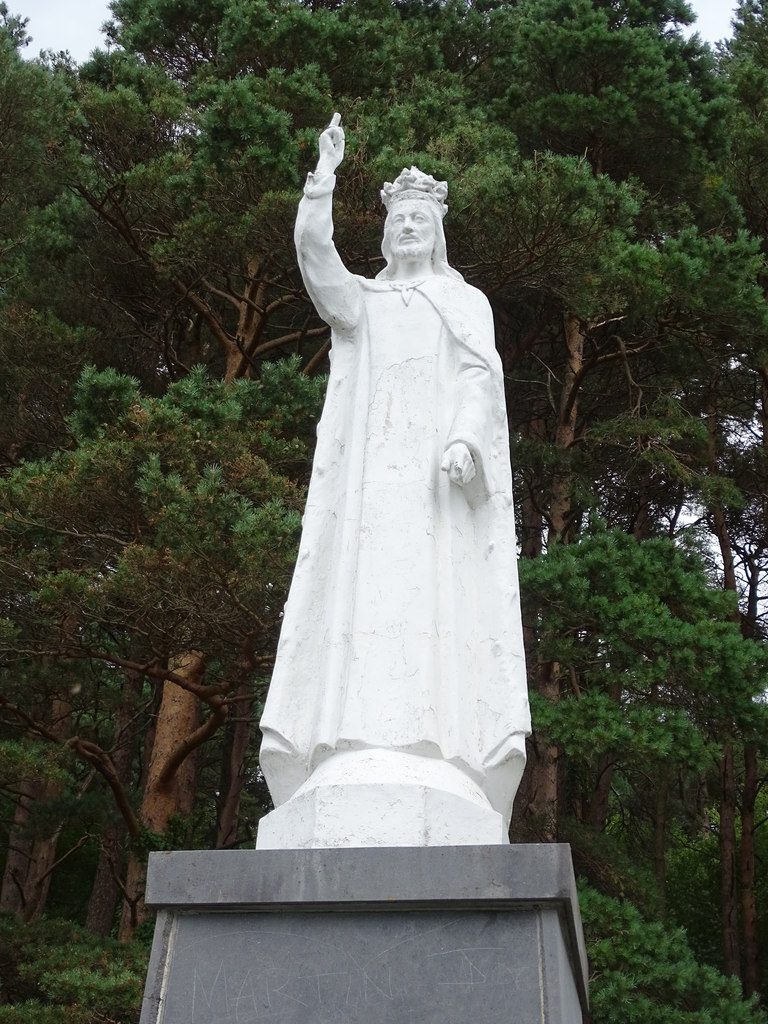
Image Copyright Matthew Chadwick and licensed for reuse under Creative Commons Licence
This weekend’s hymn from Sing Praise is ‘Christ Triumphant, ever reigning’ by Michael Saward. I chose it to reflect the theme of Christ the King that the Church observes on this Sunday before Advent.
As I’m also preaching today, I read up on the origins of this festival. I knew it had originated in the Roman Catholic church, but it seems it was instituted by the then Pope in the 1930s as a deliberate reaction against the fascism of the Italian government of the time. Where the earthly power was concentrated in the hands of a dictator who could command a top-down approach to society and impose restrictions on groups out of favour with the regime, when we think of Christ as King it is as one who uses his power to enable others to flourish, not to control them. In the parables of Jesus, especially the ones about the sower and the mustard seed, the task of the Church is to plant seeds of hope in people’s lives, which God can then grow into fruitful activity. It’s a bottom-up, ‘grass roots’ approach to transforming society, totally at odds with the controlling tendency of many worldly governments.
But back to the words of the hymn. Although there is mention here of Christ’s humility, his willingness to act as the ‘suffering servant, scorned, ill treated, victim crucified’, the emphasis here is not on the growth of the Church but on the Christ who after his resurrection ascended into heaven to be King of the world (or indeed universe). This ‘Lord of heaven’, this ‘Priestly king enthroned for ever’, is worthy of the praise of those he has redeemed. That is why the hymn is also threaded through with the language of worship: ‘hear us as we sing’, ‘sin and death and hell shall never stifle hymns of love’, ‘ceaselessly upon you gazing, this shall be our song’. And the song itself? ‘Yours the glory and the crown, the high renown, the eternal name’.
Both these outlooks are needed to understand what we mean by the Kingdom of Christ: his victory over death and reign in heaven, but also his coming on earth (in flesh then and in spirit now) to enable the outworking of his kingdom in myriad small ways, as seeds of faith are sown and individuals and communities enabled to flourish.
I seem to recall that Michael Saward said of this hymn that it was one of the quickest he ever wrote: the whole hymn came in little more than an hour one evening – and with its tune by Michael Baughen it quickly became a great favourite of many Christians. The more recent tune by John Barnard has only increased its popularity, and it is a firm favourite at St Luke’s Eccleshill (although we have never learned the later tune). As a summary of Jesus’ role in our faith, and of his ministry, it says a lot in a few words.
—–
It is hard to nail down the festival of “Christ the King” too precisely: in the scheme of the year, it comes after Christ’s ascension into heaven, after the ministries which he exercises by his Spirit in the present day, and before his coming again in power and glory – so its name would suggest it is a celebration of him being on his Father’s throne reigning in power and glory. Yet the bible readings associated with it are typically Good Friday ones – Christ achieved his kingship by service. It always reminds me of Noggin’s conversation with Graculus in “Noggin and the birds”:
“Graculus, I am king of the people of the Northlands, but am I king of the birds too?”
“Why do you want to know?”
“I want to know if I am allowed to help them. As king of the townsfolk it is my privilege to be able to help the people with their roofing and their farming – but am I allowed to help the birds too?”
Of course, the vision of kingship posited by Oliver Postgate and Peter Firmin in the story is completely countercultural – and it is exactly what this festival is driving at in the church’s liturgical year. I guess that’s what the Pope was driving at too.